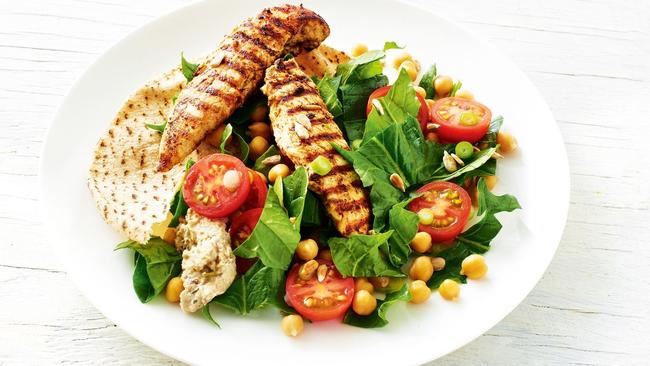The secret to healthy weight loss
When it comes to weight loss, it’s the balance of foods you eat that really matters. So skip counting calories and instead focus on the bigger picture – macronutrients. Nutritionist Chrissy Freer explains how.

Counting calories for weight maintenance and weight loss has become almost as commonplace as counting sheep for insomnia. But now there’s a new focus on macros, and ensuring you’ve got the right balance in your diet can be even more powerful for your health.
The three main macronutrients, or ‘macros’, are proteins, carbohydrates and fats. This threesome makes up the big building blocks of our diet. Everything you eat or drink is a protein, a carb or a fat, or in most cases a combination of all three.
Micronutrients, on the other hand, are smaller components of our food intake, such as vitamins and minerals. These little powerhouses are calorie neutral, and they’re essential for growth and bodily processes so they play a supportive, but critical role for macros.
Each macronutrient serves an important nutritional function on its own, so eating a healthy balance within each macro group is essential to make sure you have an adequate intake of nutrients.
Protein
Protein, for example, is fundamental for the growth and repair of our cells. When most people think of protein, they think of meat, but although meat is a great source of protein you should aim to eat a variety of sources. Each protein-rich food offers something different nutritionally – for instance, red meat is packed with iron, while dairy products are high in calcium. Venture beyond the butcher and opt for seafood, eggs, dairy, tofu, legumes, nuts and seeds for your protein hit.
Carbohydrates
With carbs, there are two main types: simple sugars, such as glucose or fructose, and complex carbohydrates – think starches and dietary fibre. For foods chock-full of carbs, look to grains, fruit (fructose), vegies, legumes and even milk (lactose).
Not all carbs are created equal, however, and they often get a bad rap. You cannot, for instance, compare highly refined carbs and simple sugars – the ‘bad guys’ – with wholegrains and fibre-rich vegetables – the ‘good guys’. Comparing white rice with wholegrain brown rice is a prime example. White rice has had its outer layers removed, taking away most of its dietary fibre and its valuable phytochemical content. Made up mostly of starch, it doesn’t offer much more than a quick energy hit. To really reap the nutritional benefits of carbs, choose complex carbs, ideally in their wholegrain form which is rich in dietary fibre.
Fats
Fats are energy dense and indispensable to our health when eaten in moderation. They aid satiety, are necessary for healthy cell walls and deliver fat-soluble vitamins and essential fatty acids. Broadly classified, fats can be saturated or unsaturated. The fats in food always contain a combination of both in varying ratios. Saturated fats are linked to health issues such as increased risk of heart disease and cancer. Unsaturated fats, which include monounsaturated and polyunsaturated fats (omega-3 fatty acids), are the favoured fats, and are associated with positive health benefits.
Daily macro intake
It’s also important to get a good mix of all three macronutrients. The Australian Dietary Guidelines suggest a recommended dietary intake (RDI) of about 46g protein per day for adult females and 64g per day for adult males. This equates to a small serve of protein with each main meal. The guidelines don’t offer an RDI for carbs, but advise getting 25-30g dietary fibre every day for good health, or at least 6g fibre at every main meal plus a fibre-rich snack or two. Fats should represent about 20-30 per cent of our total calorie intake; the saturated fats should be no more than 10 per cent.
What’s on the Perfect Plate?
The Perfect Plate is my hunger-busting formula for weight-loss success. With this balance of macronutrients, you’ll be able to control your calorie intake and help stabilise your blood sugar levels. You’ll also be less likely to binge on unhealthy snacks between meals.
Vegies:
At least half your plate at each main meal should consist of vegetables. Vegies are packed with dietary fibre to keep you feeling full for longer, and loaded with disease-fighting phytonutrients. What’s more, they’re extremely low in calories.
Lean protein:
One-quarter of your plate or roughly the size of your fist should be lean protein, which assists satiety and helps prevent slumps in blood-sugar levels.
Wholegrains/starchy veg:
Add a small serve of wholegrains or a starchy vegetable for added soluble and insoluble dietary fibre, and to boost energy.
Good fats:
Add a drizzle of olive oil, a small wedge of avocado or a sprinkling of nuts or seeds for a good dose of heart-healthy fats that will leave you feeling satisfied.
Originally published as The secret to healthy weight loss


